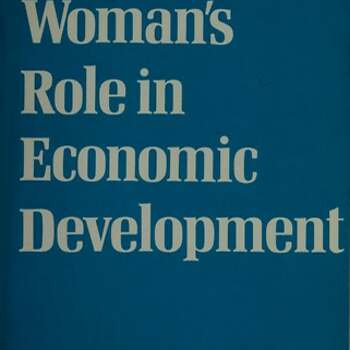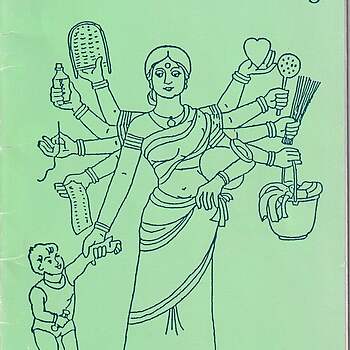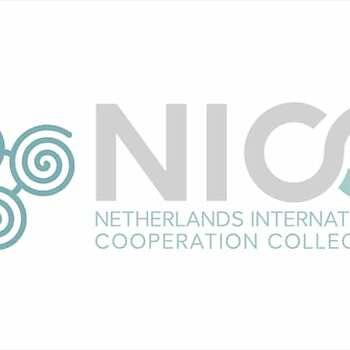The early 1970s – Dutch development cooperation is still gender blind
Until the mid-1970s, MFA’s Directorate for International Technical Aid (DGIS) – as it was called at the time – could be characterized as a conservative environment. Women were invisible in the first and second multi-annual programs for international technical aid (1968-1971 and 1972-1975). The projects supported by MFA were rather technically oriented with a lack of attention for the human and social dimension. Since the early 1970’s, under the social-democratic Minister Jan Pronk (1973-1977), poverty reduction became an important goal of Dutch development cooperation, and economic development was one of the strategies. However, poverty reduction strategies often ignored the specific challenges for women, resulting in increased gender gaps.
The international second feminist wave led to change in the 1970s
By 1970 the second feminist wave started to have effects on development thinking. An international milestone for raising awareness on the devastating effects of gender biased economic strategies was the ground-breaking empirical research Women’s Role in Economic Development (1970) by Ester Boserup. Ten years later, Barbara Rogers published her book The Domestication of Women, Discrimination in Developing Countries (1980). Both authors showed that the mindset of policy makers and implementing agencies was largely based on the Western, middle-class breadwinner-housewife-model. Focusing on technical aid to improve productivity of male labour force and neglecting women’s work has often negatively impacted on women’s traditional economic activities and widened the gap in labour productivity and income between women and men.
A new era in the thinking about women’s role in development was officially launched by the UN with the International Women’s Year 1975, and especially with the first UN Conference on the Status of Women in Mexico (1975). It was a historical conference. The General Assembly of the UN endorsed the World Plan of Action and proclaimed 1976-1985 the United Nations Decade for Women: Equality, Development and Peace.
In this context Minister Pronk initiated a policy and strategy to promote Women in Development (WID). In preparation of the UN Conference on the Status of Women in Mexico of 1975 he partnered with a research team of anthropologists in Leiden (among them Els Postel-Coster en Joke Schrijvers) (see the Timeline Gender and Netherlands International Cooperation). This team was also asked to train MFA bilateral experts and staff of DGIS on WID.
The 1980s and 1990s – International momentum culminating in Beijing Platform for Action
On the global level, a series of 5-yearly UN conferences on Women (see the Timeline Gender and Netherlands International Cooperation) kept up the momentum for women and development, with explicit attention to women’s economic roles. Important institutional achievements were the adoption of the Convention on the Elimination of all forms of Discrimination Against Women (CEDAW) in 1979, and the foundation in 1976 of two new UN-agencies: UNIFEM (United Nations Development Fund for Women), and INSTRAW (International Research and Training Institute for the Advancement of Women) (both became part of UN Women in 2011).
In 1995 the Fourth UN World Conference on Women took place in Beijing. It resulted in the Beijing Declaration and Platform for Action. This is still considered the most progressive, internationally endorsed agenda for advancing women’s and girls’ rights. The Beijing Platform for Action was the first global policy framework to confirm gender mainstreaming as a key strategy for realizing gender equality. The Platform makes concrete commitments under 12 areas of concern, among them Women and the Economy and Women and Poverty. The commitments on Women and the Economy are grouped under six Strategic Objectives:
- Promote women’s economic rights and independence, including access to employment, appropriate working conditions and control over economic resources
- Facilitate women’s equal access to resources, employment, markets and trade
- Provide business services, training and access to markets, information and technology, particularly to low-income women
- Strengthen women’s economic capacity and commercial networks
- Eliminate occupational segregation and all forms of employment discrimination
- Promote harmonization of work and family responsibilities for women and men.
Dutch policy in 1980s and 1990s – Gender and Development gaining political priority
The first Women in Development policy document was launched at the beginning of the 1980s. The Ministers for Development Cooperation, Jan de Koning (1977-1981) and Eegje Schoo (1982-1986) focused on promoting income generating projects for poor women in developing countries. In 1986 MFA had created a ‘Vrouwenfonds’ (Women’s Fund), out of which policy development and innovative projects could be financed. Funding for this fund now increased substantially.
From the start, Dutch development cooperation channelled funding through Dutch development NGOs, notably the four so-called ‘Co-funding Organizations’ (‘Medefinancieringsorganisaties’): Cordaid, Hivos, ICCO and Novib (now called OxfamNovib). Over the years, other non- or semi-governmental partners also received funding: SNV, trade unions, Dutch municipalities, and smaller Dutch and international NGOs. Generally, these NGOs’ policies and experiences reflected government policies, although they had some space to set their own agendas. The NGOs often experimented with innovative approaches, though implementation took place at a relatively small scale. Examples of their WEE work is included in in various other parts of this WEE timeline.
During the 1990s sustainable poverty alleviation returned as a strong focus of the Dutch development cooperation during the second period of Minister Jan Pronk (1989-1998). His policy was based on three firmly anchored pillars of poverty, women, and the environment, as reflected in the policy document A World of Difference. Gender and Development (GAD), an approach that evolved from the women focused approach (WID and WAD), got a powerful impulse in this period. 1990 is considered the start of the GAD policy in the Netherlands.
In the early 1990s the OECD developed a set of criteria for project assessment, the DAC-WID criteria. In 1994 just 36% of the Dutch bilateral projects fulfilled three of the five DAC-WID criteria, while the target was 50% by 1998. It showed that gender mainstreaming in all development activities remained challenging. In order to support gender mainstreaming, the MFA gender division (called DST/VR at the time) developed several instruments, including the women / gender impact studies, that assess the impact of development projects on women and gender equality, the framework for socio-economic and gender analysis, and gender budgeting. In cooperation with other donors DST/VR supported research on the gender-impact of macro-economic policy and structural adjustment programs.
During the preparation phase to the fourth UN Women’s Conference in Beijing (1995), DST/VR had provided extensive support to women’s organizations in the Global South, ensuring that their voices were heard at the Beijing Conference. This support continued after the Beijing Conference, and included support to the Women’s World Banking, a network specialized in access to finance for women micro-entrepreneurs.
The political interest in addressing women’s and gender issues was reflected in organizational adjustments. In 1996 a Women and Development unit was included in MFA’s Department of Social and Institutional Development with 6 fulltime formation places. In addition, at the Netherlands’ Embassies in developing countries the number of Women and Development (WAD) Sector Specialists increased from one in 1985 to nineteen by 1996. The Sector Specialists were appointed at the level of First Secretary of the Embassy, which was quite a strong position at the time. They also used the Local Women’s Fund (a budget delegated by MFA) to support small emancipatory and innovative women’s projects. These local funds were very successful, and contributed worldwide to the debate about women’s rights and gender equality. The projects helped break taboos, such as violence against women, as confirmed by an evaluation in 1998 of 10 years Women and Development policy and implementation (1985-1996) (IOB 1998). (Also see: Interview Mushfiqua Satiar: A project on gender-based violence)
Despite this political emphasis on GAD, MFA had to conclude that by 1999 it had not done enough to instill leadership and support for women’s rights and gender equality among its senior staff. Incidentally, in this respect the Netherlands did not differ from other member states of the OECD Development Assistance Committee (DAC).




